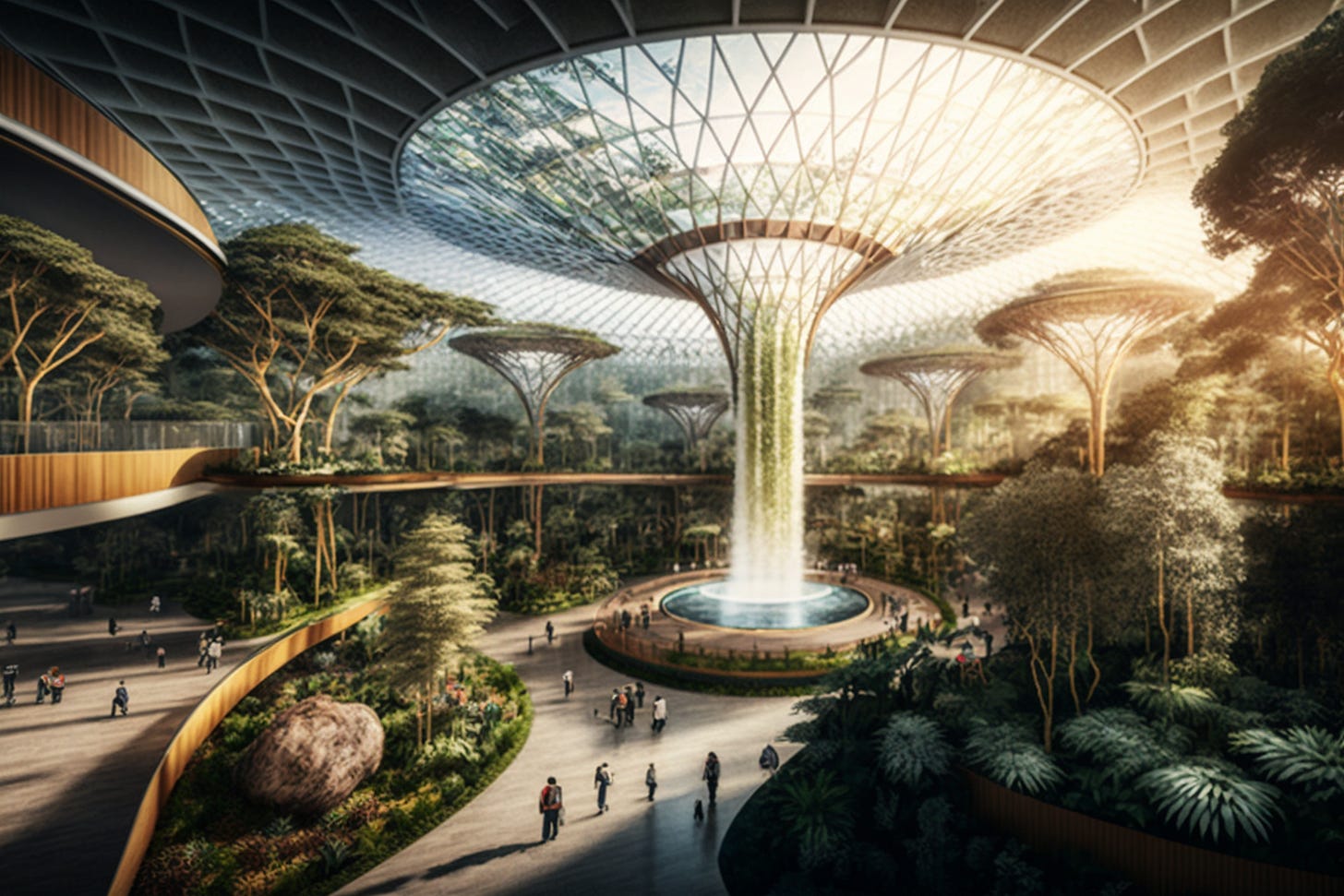What is the history of contemporary architecture
Tracing the Evolution of Modern Architecture: A Journey through the History, Styles, and Innovations of Contemporary Architecture
Contemporary architecture is a style of building design that emerged in the late 20th century. It combines elements from a variety of different styles and movements, including modernism, postmodernism and deconstruction. The purpose behind contemporary architecture is to create buildings which are innovative yet sustainable for today's society.
The history of contemporary architecture begins with early experiments in modernist design during the 19th Century Industrial Revolution when architects such as Le Corbusier began developing new forms using concrete, steel frames and flat roofs instead of traditional materials like stone or brickwork used by earlier masters such as Palladio or Inigo Jones. These designs were often seen to be very radical at this stage but they laid down many important principles that would later become part-and-parcel within contemporary architecture: minimal ornamentation; an emphasis on simple geometric shapes; open plan layouts allowing greater light into homes & workplaces; etc.
In addition to these early influences there has since been significant developments throughout Europe particularly focusing around industrial trends (e.g. British Brutalist), German Expressionists’ usage of sculptural form (e.g. Bauhaus School) and French Deconstructivist approaches influenced by philosopher Jacques Derrida who argued against fixed categories through his writings on ‘Deconstruction’.
After World War II ended people slowly regained the confidence required to experiment more more openly with New Structures – allowing them escape, and limiting the constraints previously imposed due to the religion and politics of the time. This post modern era saw exciting reinterpretations of old classical style buildings alongside high tech constructions. Major advancements in science and technology served to revolutionize the transportation industry and saw the advent of the skyscrapers we now see in cities around the world today.
This period also witnessed tremendous growth and popularity amongst professional architects, giving rise to the term 'International Style'. This term refers to architecture’s ability to transcend cultural boundaries around the world. From here onwards, individualized designs grew exponentially, enabling architects to work creatively and ignore earlier style guidelines. Today architects continue to employ a range of conventional and unconventional techniques in order to achieve their desired results. Striving for innovation while still ensuring sustainability remains a priority.
Whether you’re a passionate architecture aficionado or just curious about the newest trends in modern building design, there is no shortage of places to explore contemporary architecture. From iconic landmarks that shape skylines around the world and cutting-edge cultural institutions built by renowned architects to lesser known destinations with awe-inspiring structures, here are some of the best spots for taking in stunning contemporary buildings:
- Shanghai – China: Home to many recent skyscrapers designed by top designers like Foster + Partners and KPF Architects, this city has an ever changing skyline which evolves day after day as new projects get completed. Some must see examples include ‘The Cloud’ at Lujiazui Finance & Trade Zone by MAD Architects; Zaha Hadid's Galaxy Soho complex near Wangfujing Street; and The Bund Financial Centre also located downtown along Huangpu Riverfront Promenade.
- Singapore: This densely populated metropolis features numerous ambitious architectural marvels from leading international firms such as UNStudio, Pritzker Prize winner Toyo Ito, Maki Associates etc., making it one of Asia's most exciting cities when it comes to innovative designs across various scales including public housing towers (Sky Habitat), malls (Jewel Changi Airport) theatres (Esplanade Theatre ), museums (National Gallery Singapore) and more.
- Rotterdam - Netherlands: Amsterdam may be Holland's capital but Rotterdam steals its thunder when it comes to charmingly quirky yet sophisticated facades sprinkled all over town thanks largely due De Architekten Cie 's interventions since the early 2000′s. Highlights vary between Erasmus Bridge connecting the North Bank district with Wilhelminapier area through Markthal indoor food market wrapped up into a playful structural shell. Visiting these sites will paint a clear picture as to why locals often refer to Rotterdam as being an architectural mecca for both traditionalist connoisseurs and avant garde types.
- London - UK: The vibrant British capital undeniably serves as the epicenter to the global art scene where ancient structures meet ultra modern constructions. Several major landmarks have been created over the past decade that stand out easily amongst the city. Namely, the Gherkin, located at 30 St Mary Axe. This building is a central part of the city’s financial hub. There’s also The Shard towering high in the sky in Southwark. Touring about these locations gives a glimpse as to what makes the United Kingdom's largest megalopolis so special.




